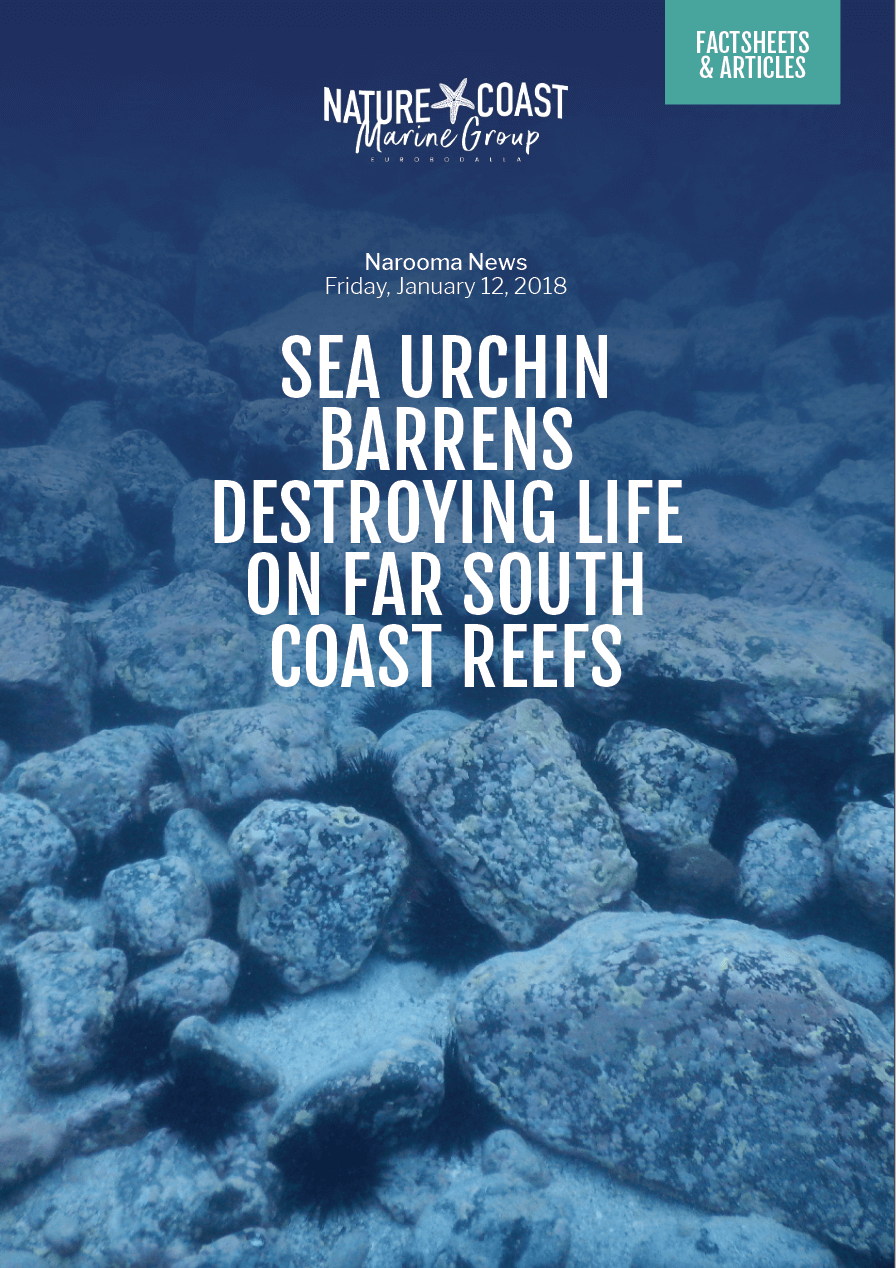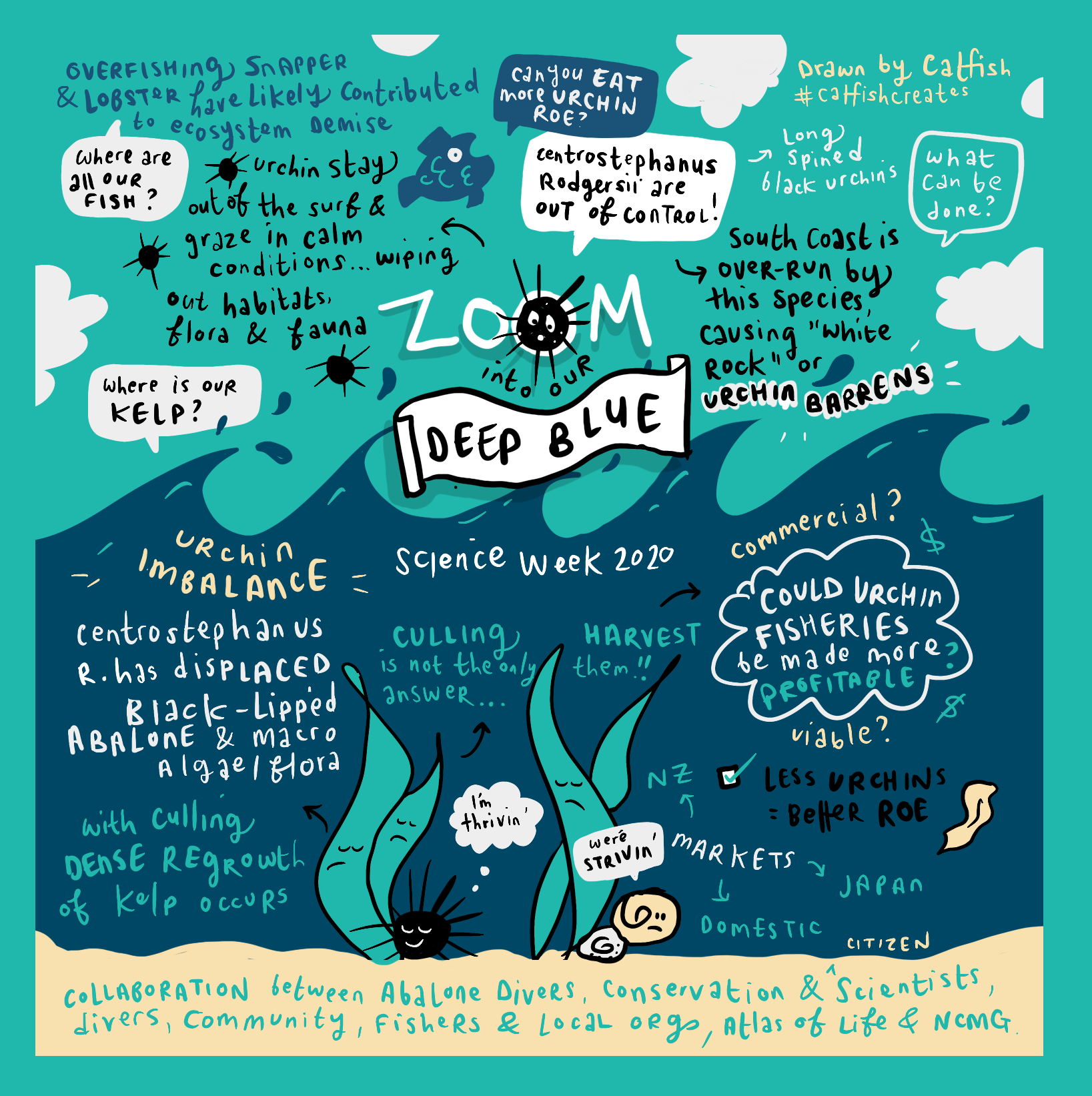HIDDEN DESERTS
Urchin barrens on the NSW South Coasts
Urchin barrens are a huge environmental problem on the NSW South coast. Fully half the shallow rocky reefs in our area are now degraded.
Following persistent advocacy from the Nature Coast Marine Group, the Marine Park has set up a Working Group comprising various stakeholders that will look at how the urchin barrens problem can be dealt with in the Batemans Marine Park. It has not yet developed a forward plan, but NCMG will be actively engaged.
Most people don’t know that half of the shallow rocky reefs on the South Coast of NSW look more like an underwater moonscape than a healthy and diverse habitat. Over the years, millions of purple sea urchins have grazed down the kelp forests, leaving just bare rock covered by stony encrusting algae, the urchins themselves and a few tough critters eking out a minimal existence. In these areas there is virtually no plant life.
Nature Coast Marine Group’s Bill Barker says that his group has been trying to get the State Government to recognise the problem in the Marine Estate review that has been going on for the past six years. “Without this recognition”, he says, “we are concerned that nothing will be done”.
”These areas are actually known as ‘urchin barrens’. They have lower productivity and lower biodiversity than the kelp forests they have replaced. More research on the problem needs to be done but the present situation is probably the result of ecological processes that have been going on for many years that can be traced back to historical overfishing of the natural predators of the urchins. This has allowed their numbers to explode.”
“We provided detailed information for the government’s Threat and Risk Assessment last year that was part of the Marine Estate review”, Bill added.
This video is about the Urchin Barren problem, made by Bill Barker
“We also raised it with officials directly. Despite the fact that DPI Fisheries scientists and other experts are well aware of the problem, the government’s recently-released draft Marine Estate strategy contains nothing specific aimed at turning this situation around, or even to undertake research into the problem.”
“A decline in productivity and diversity is obviously bad for the environment. But there is an economic dimension as well: urchin barrens are bad for the abalone industry and even for the urchin fishery. And it can’t be good for fish populations since no plants and their associated animal life means no food for the smaller creatures and fish on which bigger fish feed. And that is before we consider the multiple challenges posed by climate change. Something needs to be done.”
Meeting Notes from National Science Week discussion on Urchin Barrens 2020.



